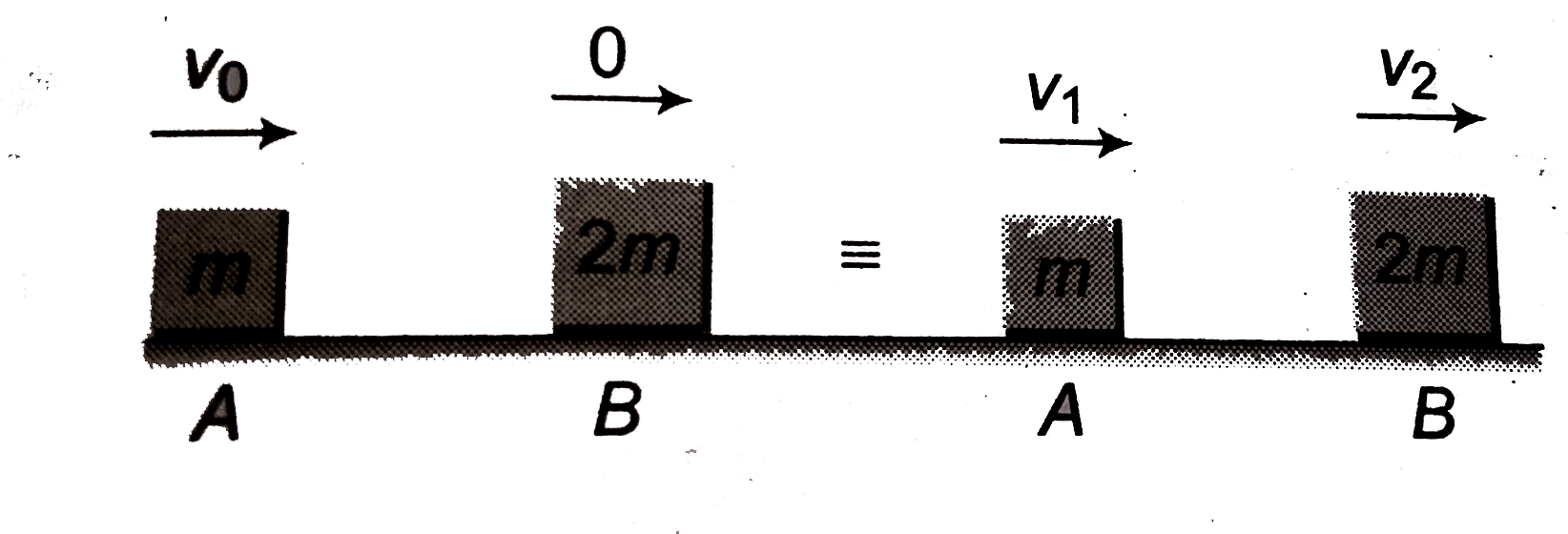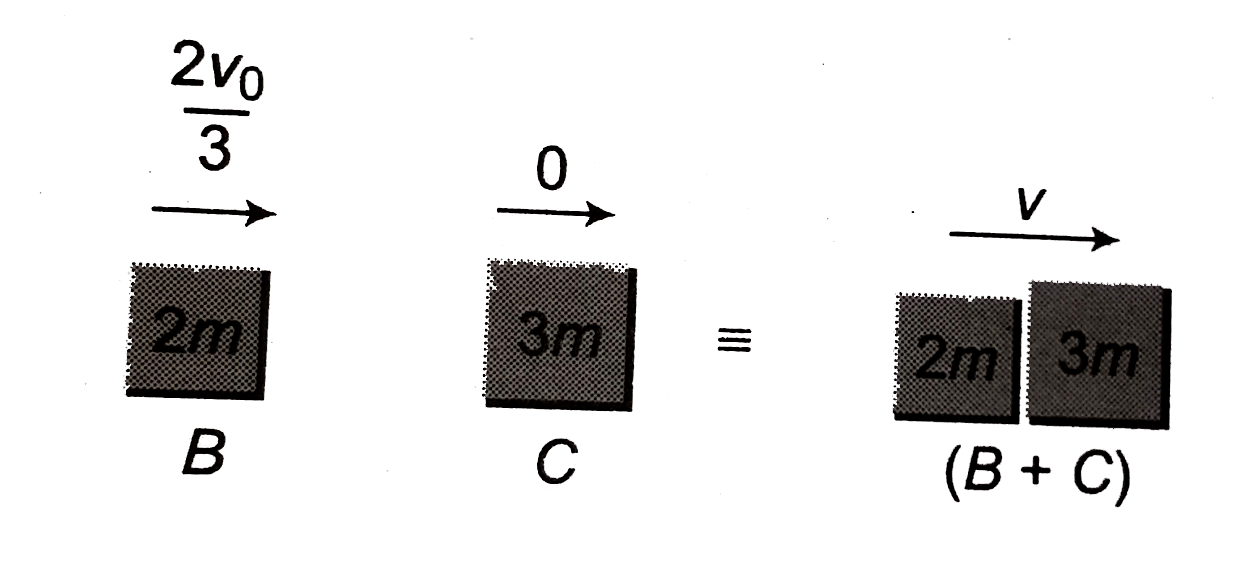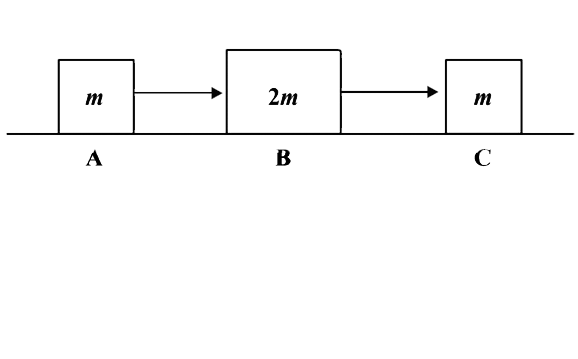Three objects , and are kept in a straight line on a smooth horizontal surface. These have masses , and , respectively . The head - on elastic collision takes place between and and then makes completely inelastic collision with . All motions occur on the same straight line. The final speed of will be

The correct Answer is:D
The head - on elastic collision between and
(i)
(ii)
Solving,
Completely inelastic , the head - on collision between and
Final speed of


Topper's Solved these Questions
Similar Questions
There object A,B and C are kept is a straing line a fritionlas horizental surface . These have masses have increase on 2m and m repectively . The object A move toward B with a speed 9 m//s and makes as electic collision with a there after B makes complately inclesis with C . All motion over on the same strangth line . Find the first speed of the object C
 View Solution
View SolutionA and B ----→Elastic collision
B and C ----→ inelastic collision. Find final speed of C View Solution
View Solution
Knowledge Check
- Question 1 - Select One
Two particles A and B of masses 10 kg and 38 kg, respectively, are moving along the same straight line with velocities 15 m/s and 3 m/s, respectively, in the same direction. After elastic collision, the velocities of A and B are vAand vB, respectively, in the direction of initial motion. Then
 AvA=20m/s,vB=8msBvA=–4m/s,vB=8m/sCvA=16ms,vB=28m/sDvA=–5m/s,vB=10m/s
AvA=20m/s,vB=8msBvA=–4m/s,vB=8m/sCvA=16ms,vB=28m/sDvA=–5m/s,vB=10m/s
A particle of mass m1 moving on a smooth surface with some velocity strikes another particle of mass m2 at rest. The head - on elastic collision takes place. After the collision , particles move with equal speed in opposite direction . Determine the mass ratio.
View SolutionAn object of mass m is moving with velocity ữ towards a plane mirror kept on a stand as shown in the figure. The mass of the mirror and stand system is m. A head- on elastic collision takes place between the object and the mirror stand the velocity of image before and after the collision is
View SolutionThree balls A, B and C are placed on a smooth horizontal surface. Given that mA=mC=4mB. Ball B collides with ball C with an initial velocity v as shown in figure. Find the total number of collisions between the balls. All collisions are elastic.
 View Solution
View SolutionThree balls A, B and C are kept in a straight line. The separation between A and C is 1 m, and B is placed at the midpoint between them. The masses of A,B,C are 100 g, 200 g and 300 g respectively. Find the net gravitational force on B.
View SolutionThree balls A, B and C are kept in a straight line. The separation between A and C is 1 m, and B is placed at the midpoint between them. The masses of A,B,C are 100 g, 200 g and 300 g respectively. Find the net gravitational force on A.
View SolutionFour identical balls A,B,C and D are placed in a line on frictionless horizontal surface. A and D are moved with the same speed u towards the middle as shown. Assuming elastic collisions, find the final velocities.
 View Solution
View SolutionThree balls A, B and C are kept in a straight line. The separation between A and C is 1 m, and B is placed at the midpoint between them. The masses of A,B,C are 100 g, 200 g and 300 g respectively. Find the net gravitational force on C.
View Solution

